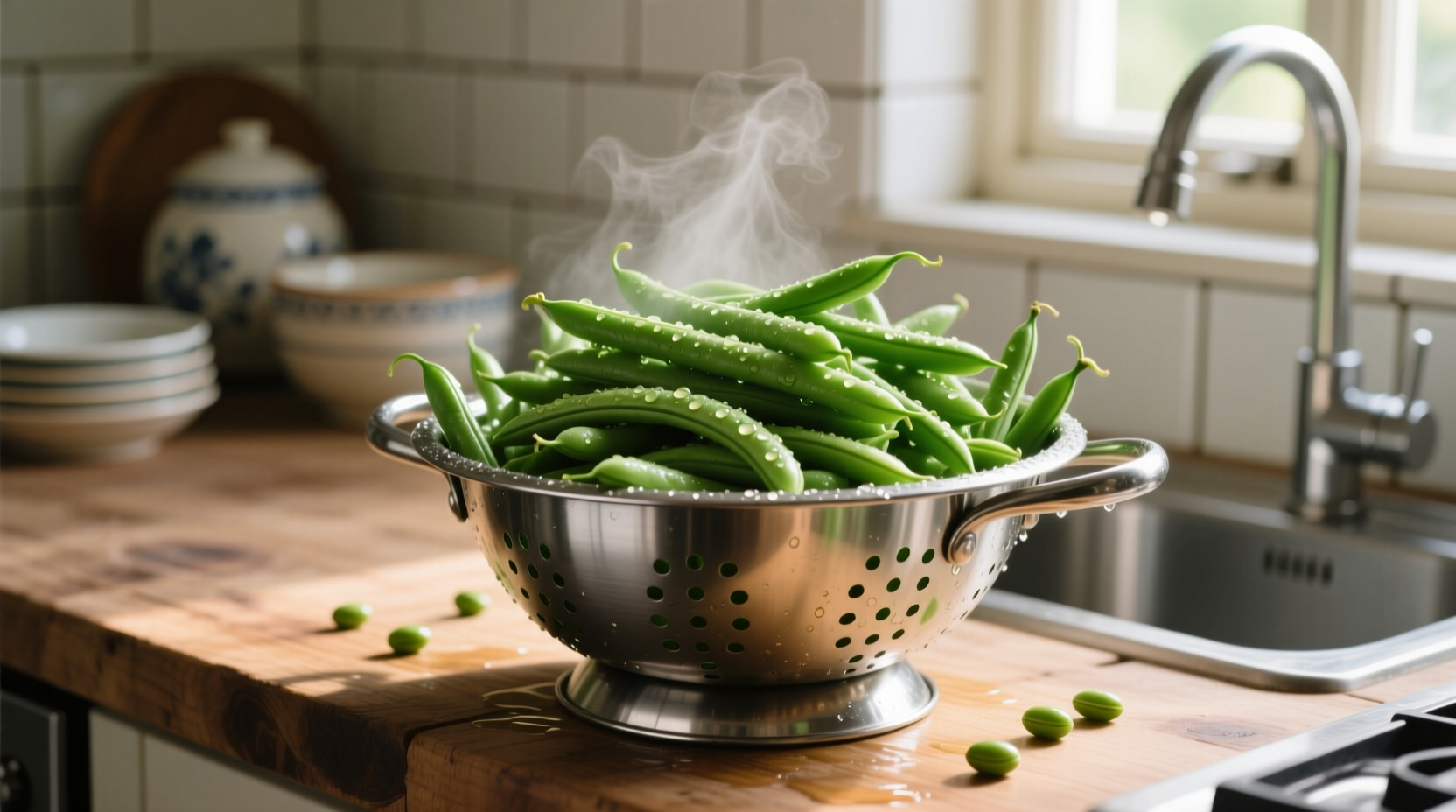Ever wondered why your green beans turn out mushy or stubbornly crisp? Getting the timing right transforms this simple vegetable from bland to brilliant. As a chef who's cooked everything from Michelin-starred kitchens to backyard barbecues, I've perfected the science of green bean cooking. This guide delivers precise timing for every method, plus professional tricks to achieve that elusive crisp-tender texture every single time.
Choosing Your Cooking Method: What Works Best for Your Situation
Your cooking method depends on three key factors: time available, equipment on hand, and desired texture. Let's break down what works best for different scenarios:
| Cooking Method | Best When... | Texture Result | Active Time |
|---|---|---|---|
| Boiling | You need speed and simplicity | Uniformly tender | 5 minutes |
| Steaming | You want to preserve nutrients | Crisp-tender with bright color | 7 minutes |
| Sautéing | You want maximum flavor development | Slightly caramelized edges | 10 minutes |
| Roasting | You have oven space and want hands-off cooking | Crispy exterior, tender interior | 3 minutes prep + cooking time |
Perfect Boiled Green Beans: Timing and Technique
Boiling remains the fastest method for cooking green beans, but timing is critical. According to USDA cooking guidelines, the ideal boiling time depends on bean thickness:
- Thin beans (French haricots verts): 3-4 minutes
- Standard green beans: 4-5 minutes
- Thick beans (Romano style): 5-6 minutes
The key to perfect boiled green beans is the ice bath technique. Immediately transfer beans to ice water after cooking to stop the cooking process and lock in vibrant color. This method preserves up to 30% more vitamin C compared to continuing to cook off-heat, according to research from the USDA Food Research Lab.
Steaming Green Beans for Maximum Nutrition
Steaming preserves more nutrients than boiling while delivering that perfect crisp-tender texture. Here's the professional timing guide:
- Fresh, thin beans: 4-5 minutes
- Fresh, standard beans: 5-6 minutes
- Thicker varieties: 6-7 minutes
Check for doneness by piercing with a fork—the bean should offer slight resistance but not be crunchy. Oversteaming causes green beans to lose their vibrant color and turn olive green due to chlorophyll breakdown, as documented in Harold McGee's On Food and Cooking.
Sautéing Green Beans: Flavor Development Timeline
Sautéing creates beautiful caramelization and deeper flavor. Timing varies based on your heat level:
- Medium-high heat: 5-7 minutes total
- With aromatics (garlic, shallots): Add after 3 minutes to prevent burning
- With protein (bacon, almonds): Cook protein first, then add beans
For restaurant-quality results, blanch beans in boiling water for 2 minutes first, then finish in the skillet. This two-step method ensures even cooking while developing that desirable sear. The American Culinary Federation recommends this technique for achieving perfect texture without sacrificing flavor development.
Roasting Green Beans: Hands-Off Perfection
Roasting concentrates flavor and creates delicious caramelization. Timing depends on your oven temperature:
- 400°F (200°C): 15-18 minutes
- 425°F (220°C): 12-15 minutes
- 450°F (230°C): 10-12 minutes
Toss beans with 1 tablespoon oil per pound, spread in a single layer, and rotate the pan halfway through cooking. Roasted green beans reach perfect doneness when they're slightly shrunken with blistered spots but still bend slightly when lifted with tongs. This method enhances natural sweetness while preserving texture better than boiling.
How to Rescue Common Green Bean Cooking Mistakes
Even experienced cooks occasionally overcook or undercook green beans. Here's how to fix common issues:
- Mushy beans: Shock immediately in ice water, then pat dry and finish in a hot skillet to regain texture
- Undercooked beans: Return to boiling water for 1-2 minutes or steam for 2-3 minutes
- Dull color: Add a splash of vinegar to cooking water next time to preserve vibrant green
Remember that green beans continue cooking from residual heat after removal from heat source. Always undercook by 30 seconds to account for this carryover cooking, a technique taught at the Culinary Institute of America.
Pro Tips for Perfect Green Beans Every Time
These professional techniques make all the difference:
- Uniform sizing: Cut beans to similar lengths for even cooking
- Salt timing: Add salt to boiling water (1 tablespoon per quart) for better flavor penetration
- Don't overcrowd: Cook in batches if necessary to maintain proper water temperature
- Season after cooking: Acidic ingredients like lemon juice can cause beans to become mushy if added too early

How Bean Freshness Affects Cooking Time
Freshness dramatically impacts cooking time. Newly harvested green beans with visible moisture beads require 1-2 minutes less cooking time than beans that have been refrigerated for several days. According to agricultural studies from University of Minnesota Extension, the enzyme activity that breaks down cell walls slows significantly after harvest, meaning older beans actually become more resistant to cooking.
Test for freshness by snapping a raw bean—it should break crisply with an audible snap. If it bends without breaking, it's past peak freshness and will require slightly longer cooking time.











 浙公网安备
33010002000092号
浙公网安备
33010002000092号 浙B2-20120091-4
浙B2-20120091-4